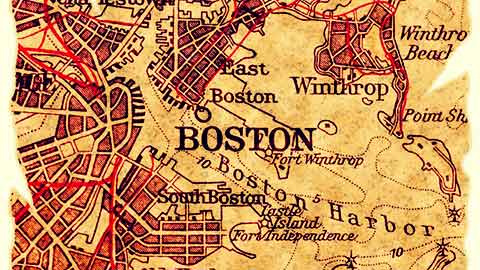
The Federal Reserve Bank of Boston has released a statement announcing that research into the technical feasibility of a potential digital dollar has concluded.
A joint venture in collaboration with MIT, the initiative known as Project Hamilton, was named after Founding Father Alexander Hamilton and MIT and Apollo Mission computer scientist Margaret Hamilton.
Boston Fed executive vice president Jim Cunha reveals that the now-concluded project was “agnostic” from the start about any future policy decisions regarding new technologies and US currency.
Further, the project focused on better understanding the opportunities and challenges of different technologies that might be used to manage and transfer CBDCs.
In early 2022, Project Hamilton published research on a transaction processor for a theoretical high-performance and resilient CBDC. The processor was developed as open-source research software, called OpenCBDC, and project leaders urged global contributors to continue working on it.
OpenCBDC, a core processing engine for money that focuses on security, performance, scalability, and flexibility, provides a codebase that supports 1.84 million transactions per second and settlement. This means transactions can be completed in under one second.
Neha Narula, director of MIT’s Digital Currency Initiative says: “The OpenCBDC codebase that resulted from this successful collaboration provides a credible and unbiased resource to evaluate design choices and ensure that a potential future CBDC could serve the public’s interest.”
After the whitepaper and code were released, Project Hamilton researchers added functionality to OpenCBDC such as programmability and audit that may be useful to evaluate a potential CBDC.
The Boston Fed and MIT will release additional findings on Project Hamilton in the coming months, with the view that the initiative provided a strong framework for policy and technology decisions that may come to the fore when establishing a CBDC in the future.
Narula adds: “Our collaboration with central banks such as the Boston Fed is at the heart of DCI’s ongoing mission to serve as a neutral convener of governments, academics, open-source communities, and the private sector. We hope that this collaborative, open-source research effort is a model for researchers from academia and the public sector to build on as we explore the future of money.”
- SEO Powered Content & PR Distribution. Get Amplified Today.
- Platoblockchain. Web3 Metaverse Intelligence. Knowledge Amplified. Access Here.
- Source: https://www.finextra.com/newsarticle/41539/boston-fed-and-mit-shutter-cbdc-project-hamilton?utm_medium=rssfinextra&utm_source=finextrafeed
- 1
- 2022
- 84
- a
- About
- Academia
- added
- Additional
- Adds
- After
- Alexander
- and
- Announcing
- audit
- Bank
- Banks
- Better
- boston
- build
- called
- CBDC
- CBDCs
- central
- Central Banks
- challenges
- choices
- code
- Codebase
- collaboration
- collaborative
- come
- coming
- Communities
- Completed
- computer
- concluded
- continue
- contributors
- Core
- Core Processing
- could
- credible
- Currency
- decisions
- Design
- developed
- different
- digital
- digital currency
- digital dollar
- Director
- Dollar
- Early
- effort
- Engine
- ensure
- establishing
- evaluate
- executive
- explore
- Fed
- Federal
- federal reserve
- Federal Reserve Bank
- Finextra
- Flexibility
- focused
- focuses
- founding
- Framework
- from
- functionality
- future
- Future of Money
- Global
- Governments
- Hamilton
- Heart
- high-performance
- hope
- HTTPS
- in
- Initiative
- interest
- IT
- Jim
- known
- leaders
- manage
- means
- might
- million
- Mission
- MIT
- model
- money
- months
- Named
- Neutral
- New
- New technologies
- ONE
- ongoing
- open source
- opportunities
- performance
- plato
- Plato Data Intelligence
- PlatoData
- policy
- potential
- president
- private
- private sector
- processing
- Processor
- project
- Project Hamilton
- provided
- provides
- public
- published
- regarding
- release
- released
- research
- researchers
- Reserve
- reserve bank
- resilient
- resource
- Reveals
- Scalability
- Scientist
- Second
- sector
- security
- serve
- settlement
- Software
- start
- Statement
- strong
- successful
- such
- Supports
- Technical
- Technologies
- Technology
- The
- The Initiative
- theoretical
- to
- transaction
- Transactions
- transfer
- under
- understanding
- us
- venture
- Vice President
- View
- Whitepaper
- will
- working
- zephyrnet











